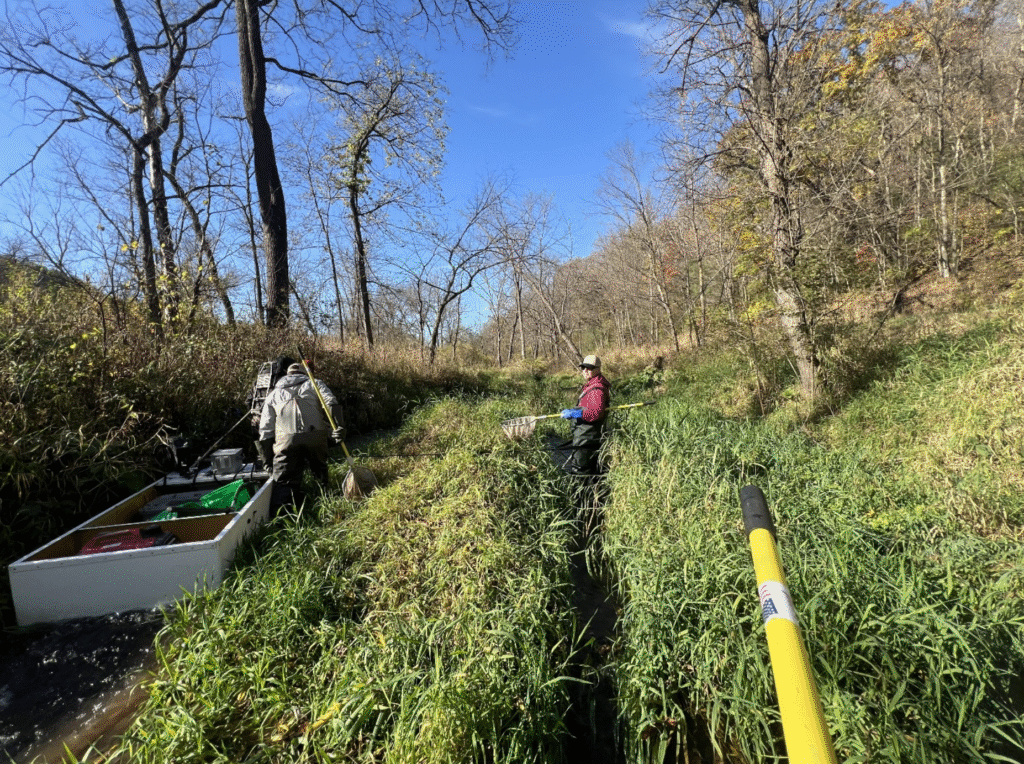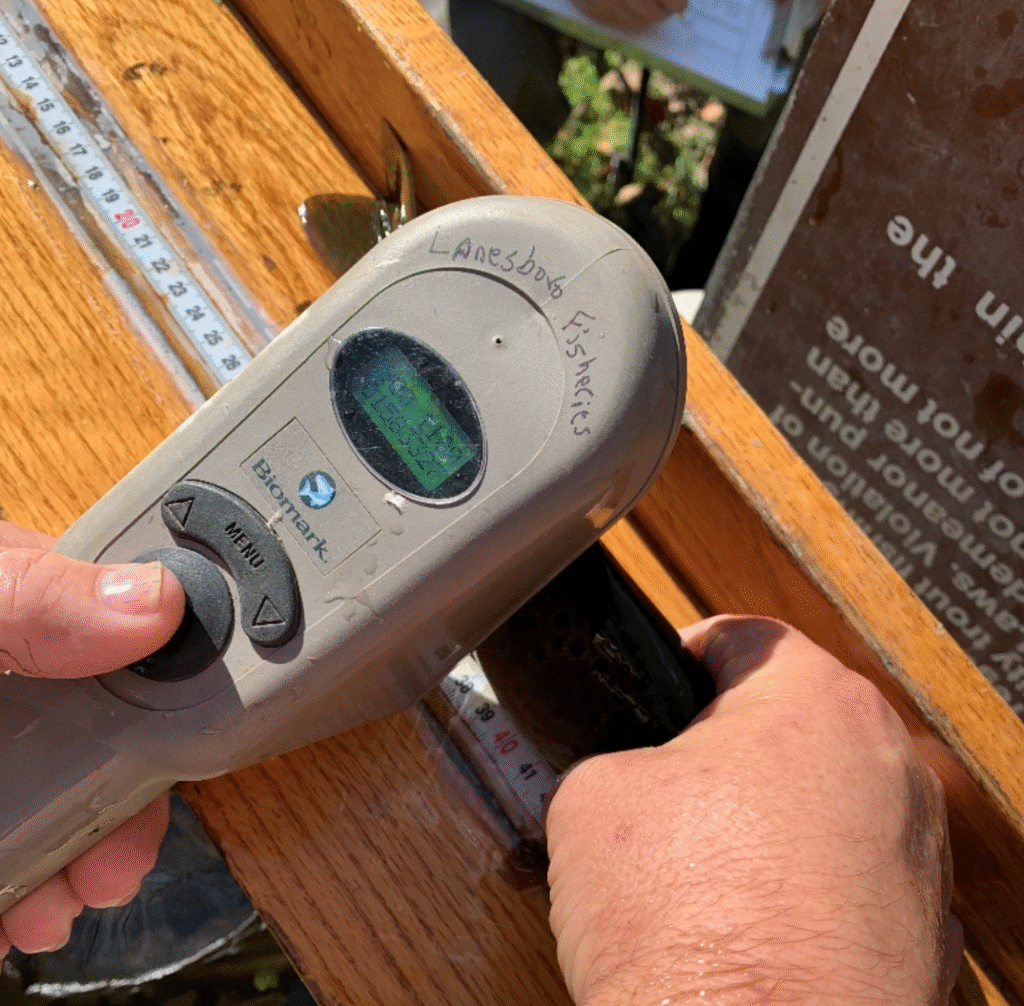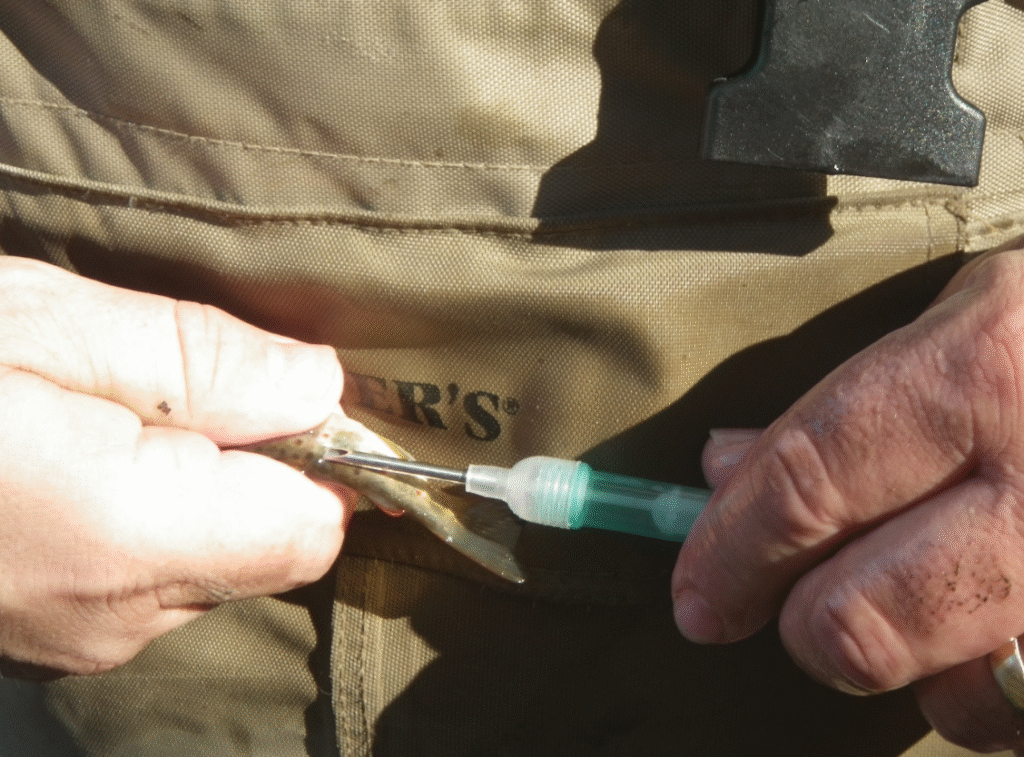Evaluating Stream Habitat Designs Across Southeast Minnesota
Over the past few decades, Minnesota has made tremendous progress in restoring and enhancing its coldwater streams. Across the state, partnerships between Minnesota Trout Unlimited, the Minnesota Department of Natural Resources (MNDNR), local Soil and Water Conservation Districts, and others have brought new life to miles and miles of degraded habitat. Habitat features including riffles, deep pools, pool logs and toewood, re-meandered channels, and sloped banks have transformed once-turbid ditches into flowing ribbons of clear, cold water where wild and native trout can thrive.
But with rapid growth of restoration efforts has come an equally important question: Which designs and techniques provide the best long-term results for trout, stream stability, and overall ecosystem health?
A new research initiative aims to answer that question. Led by MNDNR Fisheries researchers Doug Dieterman, and supported by MNTU as project partner, the study is taking a comprehensive look at how different habitat improvement approaches perform over time in Minnesota’s coldwater systems.
Much Investment, and the Need to Learn
Much has been invested in trout stream restoration in Minnesota, primarily through the Trout Stamp and the Outdoor Heritage Fund. These investments, leveraged through partnerships with conservation groups like MNTU, have improved habitat and angling opportunities across dozens of streams.
As funding increased, so did the diversity of restoration methods. Some projects used long-standing “traditional” techniques – placing overhead bank cover structures and riprap to create fish holding cover, stabilize banks, and reduce erosion. Others, especially more recent projects, have adopted natural channel design principles, reshaping streams based on geomorphic and hydraulic data – modeling the dimensions of the channel (width, depth, and meander for example) on an undisturbed section of a stream with similar geomorphology and hydrology (“reference reach”). Some projects have incorporated less rock and more wood, emphasizing natural materials and floodplain reconnection to stabilize banks and enhance habitat complexity.
Different methods or approaches have strengths, but also tradeoffs. And as anglers, biologists, and project partners know, not all projects look or function the same five or ten years later. Some have drawn criticism for being difficult to fish, lacking habitat diversity, or not withstanding high-flow events. Other projects have succeeded spectacularly over time, producing healthy trout populations and stable, resilient channels.
This variability has prompted the MNDNR to pursue research to better understand which design elements are most effective under Minnesota’s unique stream conditions.
What the Study Will Do
The research project, running from 2020 through 2028, takes a three-pronged approach to evaluating habitat projects:
- Longevity and Maintenance Needs – Researchers will measure how long projects last before requiring maintenance and what factors (like watershed size, slope, land use, or flood frequency) most influence durability.
- Habitat and Fish Population Outcomes – Using paired treatment and control reaches on the same streams, the team will compare geomorphic conditions, fish habitat, and trout populations to determine whether different designs achieve intended goals.
- Mechanisms Behind Fish Responses – In a detailed before-after-control-impact (BACI) study on one representative stream, researchers will track trout survival, recruitment, and movement using PIT-tag technology to understand why populations change after restoration — whether from improved survival, increased reproduction, or simply fish moving in from nearby reaches.
This study will generate the most comprehensive dataset ever assembled on habitat project performance in Minnesota’s trout streams.
Why It Matters
Minnesota’s anglers, MNTU, other conservation partners, and funders are eager to know how well habitat investments are working. Such evaluation will help ensure that every dollar from the Trout Stamp, Outdoor Heritage Fund, and other sources produces measurable, lasting benefits for trout streams and the people who value them.
This research will also help project designers and engineers, including MNTU, refine future habitat work. Knowing which design features perform best under certain stream conditions will help us choose the right tool for each setting. For example, some sites might benefit from wood-dominated approaches that enhance habitat diversity and natural function, while others may require more rock to withstand flashy floods or function in narrower sites.
As a partner in this research, MNTU brings important field experience and perspective from hundreds of miles of habitat projects completed statewide. MNTU understands the realities of project design, permitting, construction, and long-term stewardship, and this perspective will help researchers interpret their data in ways that are relevant and immediately useful for practitioners and funders alike.
Looking Ahead
Over the next several years, Dieterman, MNTU, and the research team will work together to select study sites, collect data, and share results with the broader conservation community. As the study progresses, we’ll keep our members updated on the results.
Ultimately, this work will help answer key questions:
- Which restoration designs provide the most durable and biologically effective outcomes in different settings?
- How long do benefits last before maintenance is needed?
- What mechanisms (habitat complexity, survival, or recruitment) drive observed changes in trout populations?
By identifying what works and why, this project will strengthen the foundation of coldwater conservation and stream restoration across the region.
A Shared Commitment to Science and Stewardship
For MNTU, this partnership exemplifies our mission to bring science, community, and stewardship together to protect and restore Minnesota’s coldwater resources. This research will ensure that the next generation of habitat projects is even more effective, efficient, and ecologically sound.





